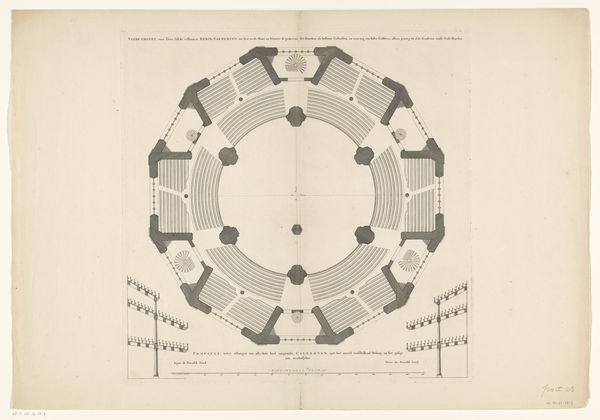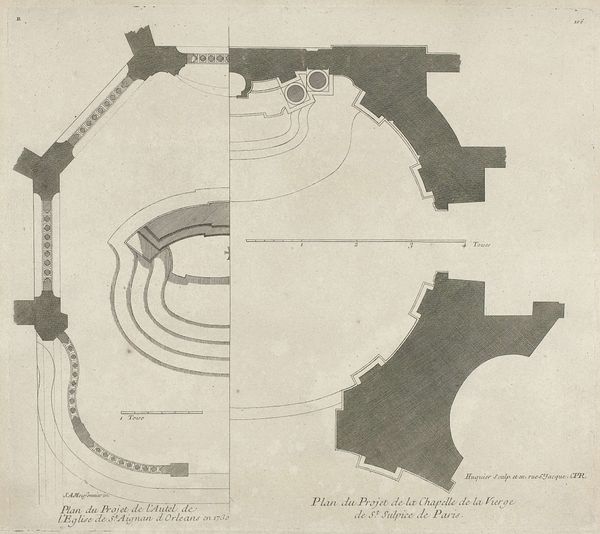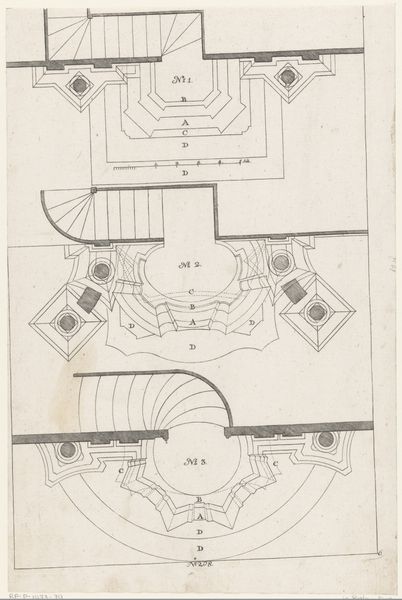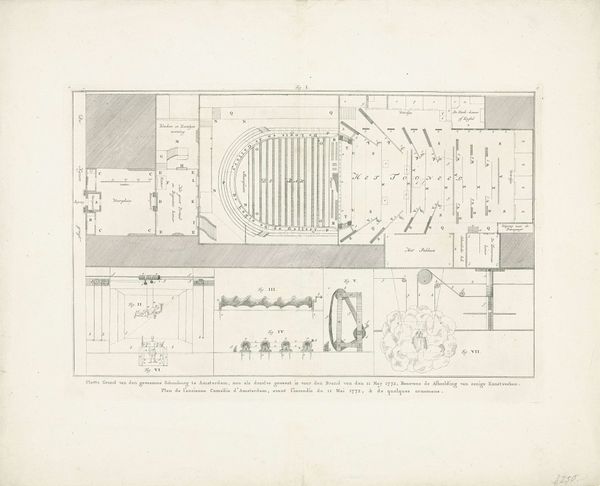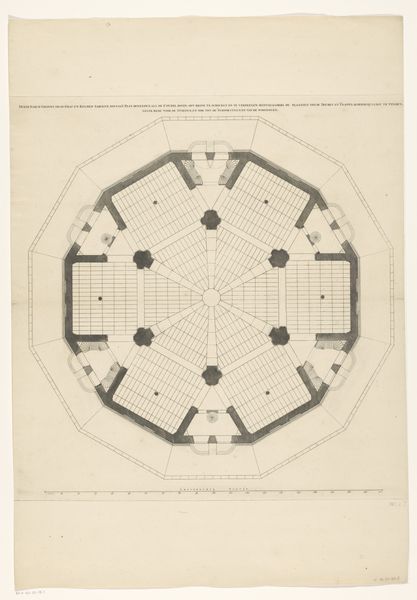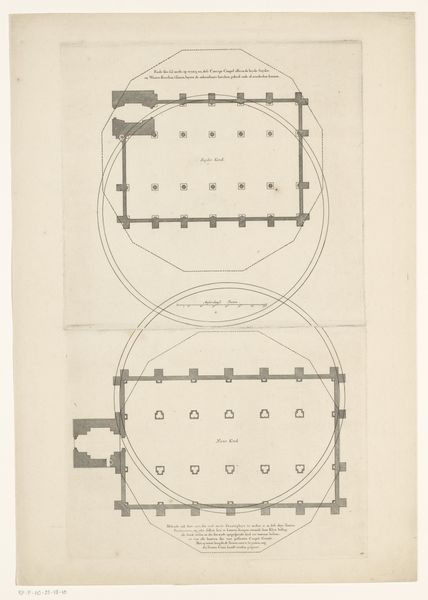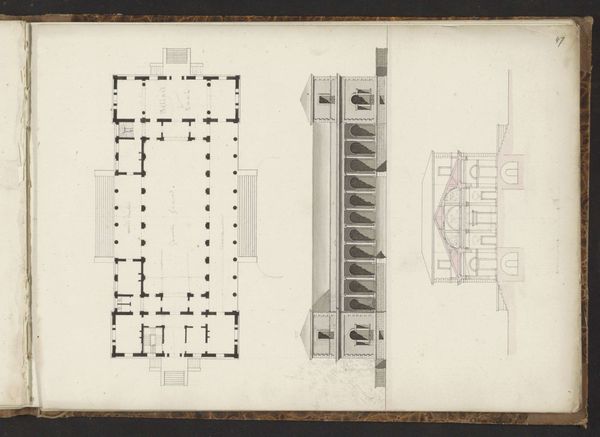
Plattegrond bij twee ontwerpen voor het altaar van de Saint-Leu in Parijs 1738 - 1749
0:00
0:00
drawing, paper, engraving, architecture
#
drawing
#
paper
#
geometric
#
history-painting
#
engraving
#
architecture
Dimensions: height 265 mm, width 332 mm
Copyright: Rijks Museum: Open Domain
Around 1728, Gabriel Huquier etched "Plattegrond bij twee ontwerpen voor het altaar van de Saint-Leu in Parijs", a study in architectural geometry. The print’s composition is strikingly bisected, presenting two distinct altar designs with a shared symmetrical rigor. Each design employs precise lines and geometric forms to articulate space and structure. Note the semiotic interplay of squares and circles, which create a visual tension between stability and movement, reflecting structuralist principles of binary oppositions. The stark monochromatic palette emphasizes the purity of form, reducing the architectural plans to their essential elements. The print invites us to question fixed meanings, prompting contemplation on how architectural design embodies power and spatial representation. The layout is not merely a blueprint, but a conceptual exploration of space. It challenges conventional perspectives. Consider how the artist uses simple lines to convey a complex interplay of space and form, which serves as an enduring symbol of innovation.
Comments
No comments
Be the first to comment and join the conversation on the ultimate creative platform.
